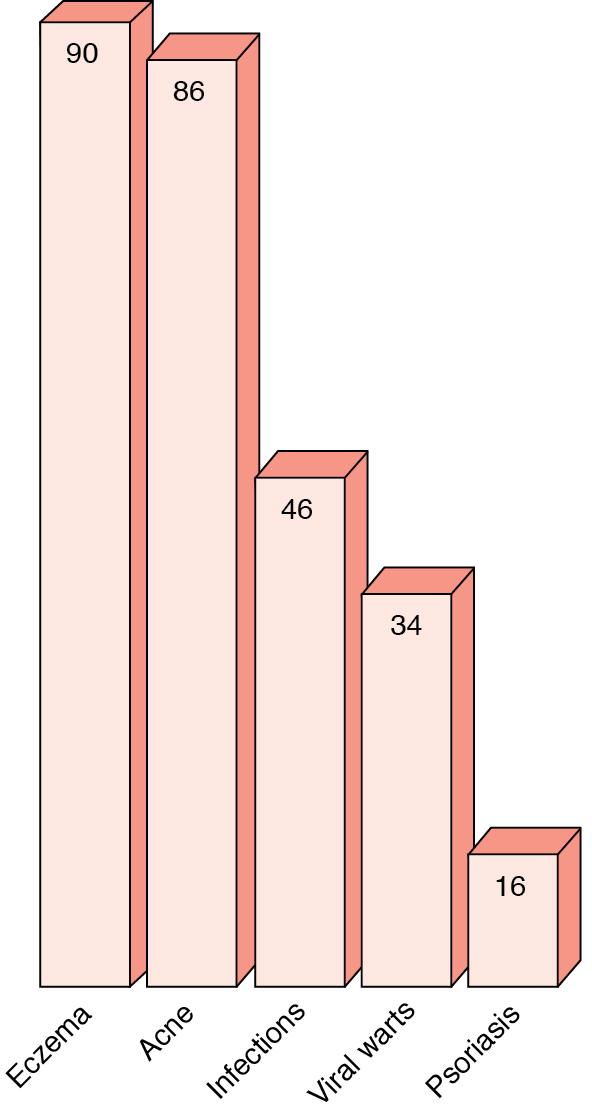Physical Address
304 North Cardinal St.
Dorchester Center, MA 02124
Skin disease is very common. About 10% of a GP’s workload and 6% of hospital outpatient referrals can be accounted for by skin problems. Skin disease is also economically significant; it is a major occupational cause of loss of time from work and the third most common industrial disease (p. 160).
In any discussion of epidemiology, it is important first to define the terms used:
Prevalence refers to the proportion of a defined population affected by a disease at any given time.
Incidence is defined as the proportion of a population experiencing the disorder within a stated period of time (usually 1 year).
The type, prevalence and incidence of skin disease all depend on social, economic, geographical, racial, cultural and age-related factors.
Reliable population statistics are difficult to obtain, but it appears that, in Europe, the prevalence of skin disease needing some sort of medical care is about 20%. Eczema, acne and infective disorders (including warts) are the commonest complaints ( Fig. 14.1 ). Only a minority seek medical advice.

Become a Clinical Tree membership for Full access and enjoy Unlimited articles
If you are a member. Log in here